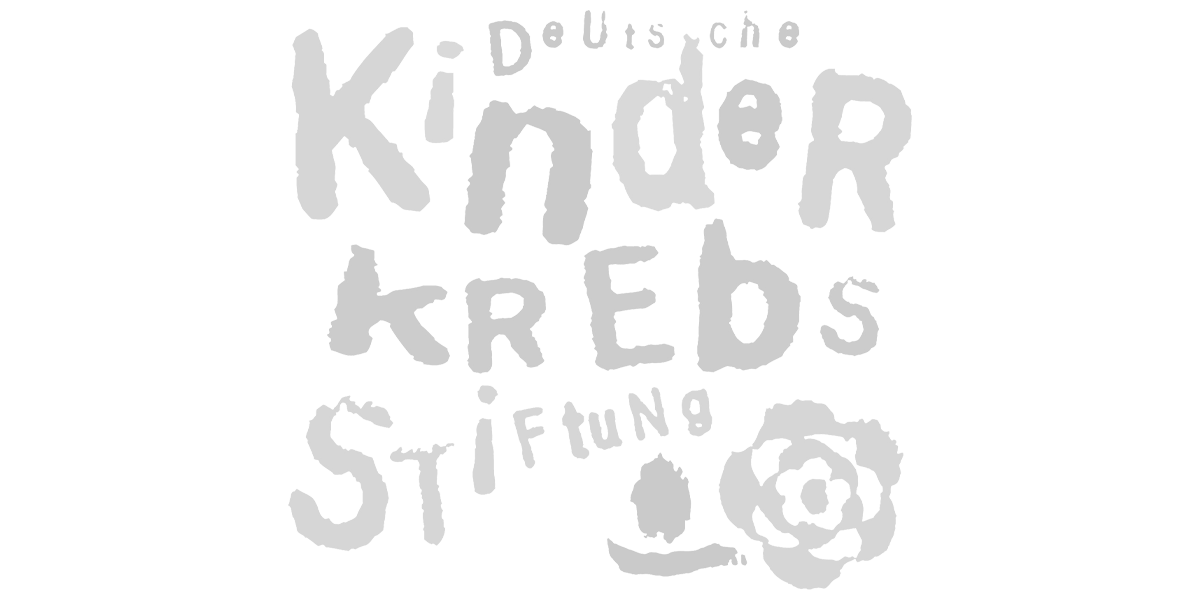"Beckwith-Wiedemann syndrome spectrum" – was ist das?
Das Beckwith-Wiedemann-Syndrom-Spektrum (BWSp) ist eine erbliche Erkrankung, die durch variable Auffälligkeiten wie eine große Zunge, einen großen Körper, ein asymmetrisches Wachstum, niedrige Blutzuckerwerte nach Geburt und ein erhöhtes Krebsrisiko im Kindesalter, insbesondere für Nierentumore, Lebertumore u.a. gekennzeichnet ist.
Wie wird die Diagnose "Beckwith-Wiedemann syndrome spectrum" gestellt?
Die Diagnose wird klinisch durch einen mit Syndromen erfahrenen Experten gestellt. Es wird ein Punktesystem verwendet. Bei ≥ 4 Punkten liegt klinisch ein klassisches BWS vor, bei ≥ 2 Punkten sollte genetische Diagnostik erfolgen.
Hauptkriterien (2 Punkte pro Symptom)
- Große Zunge
- Nabelbruch
- Einseitiger Großwuchs
- Mehrere/beidseitige Wilmstumore (dies sind Nierentumore) oder die sog. Nephroblastomatose
- Erhöhte Insulinspiegel
- Besondere pathologische Befunde der Nebenniere, der Plazenta, der Bauchspeicheldrüse (adrenokortikale Zytomegalie, plazentale mesenchymale Dysplasie, Pankreasadenomatose)
Nebenkriterien (1 Punkt pro Symptom)
- Hohes Geburtsgewicht
- Nävus flammeus (Portweinfleck) im Gesicht
- Viel Fruchtwasser/Plazentomegalie
- Ohrfalten/Ohrgrübchen
- Vorübergehende niedrige Blutzuckerspiegel Hypoglykämie/zu hohe Insulinspiegel
- Typische BWS-Tumore (Neuroblastom, Rhabdomyosarkom, Wilmstumor, Hepatoblastom, adrenokortikales Karzinom, Phäochromozytom)
- Große Niere/Leber
- Nabelhernie/sogenannte Rektusdiastase
Die Diagnose kann mittels einer genetischen Analyse gesichert werden, wobei bei ≥ 4 Punkten auch ohne genetischen Nachweis die Diagnose gesichert ist.
Wie hoch ist das Krebsrisiko?
Das Krebsrisiko ist abhängig vom genetischen Subtyp:
- Sogenannte IC2-Hypomethylierung 2.6% (v.a. Lebertumore, auch Hepatoblastome genannt)
- Sogenannte IC1-Hypermethylierung 28.1% (v.a. Nierentumore, auch Nephroblastome genannt)
- Sogenannte Uniparenterale Disomie 16% (v.a. Nephroblastome)
- Sogenannte CDKN1C-Mutation 6.9% (v.a. sogenannte Neuroblastome)
Beckwith-Wiedemann syndrome spectrum – was ist über die Entstehung bekannt?
Das BWSp wird durch eine Veränderung des Erbguts auf Chromosom 11 verursacht. Meist finden sich molekulare (sog. epigenetische) Veränderungen, die zu einem stärkeren oder schwächeren Ablesen von Genen führen, ohne dass die dort gespeicherte Information selber verändert wird.
Gibt es eine Therapie?
Körperwachstum und lateralisierter Großwuchs
- Jährliche Messung der Körpergröße bis Abschluss des Größenwachstums, ggf. Behandlung eines Hochwuchses durch pädiatrischen Endokrinologen
- Jährliche Untersuchung der Beinlängen bis Abschluss des Größenwachstums, bei Beinlängendifferenz Konsultation eines Kinderorthopäden (Schuherhöhung bei Differenz bis 2 cm, sog. Epiphysiodese bei Differenz > 2 cm)
- Bei Längendifferenzen der oberen Extremität üblicherweise keine Behandlung
Makroglossie
- Bei Atemwegsobstruktion sollte eine ausführliche Diagnostik inklusive sog. Polysomnographie und pulmologische Untersuchung erfolgen.
- Bei Schwierigkeiten beim Essen oder Sprechen, persistierendem Speichelfluss, Zahnfehlstellungen oder psychosozialen Problemen kann nach dem ersten Lebensjahr eine Zungenreduktions-Operation erwogen werden.
Hypoglykämie
- Monitoring der postnatalen (nachgeburtlichen) Blutglukosespiegel für 48 Stunden, bei Unterzuckerung ggf. Überwachung auf einer neonatale Intensivstation
- Fastentest (Messung von Glukose, Insulin, Ketonen nach 6 Stunden (4 Stunden bei Frühgeborenen) Nüchternheit)
- Behandlung der Hypoglykämie/des Hyperinsulinismus nach üblichem Standard
Kardiale Fehlbildungen
- Herzuntersuchung bei Diagnosestellung, bei klinischen Auffälligkeiten Konsultation eines Kinderkardiologen zur Echokardiografie
- Bei Herzfehlern Behandlung nach üblichem Standard
Neurologische Entwicklung
- Regelmäßige Untersuchung der kognitiven Untersuchung (Risikofaktoren für verzögerte neurologische Entwicklung assoziiert mit BWS sind postnatale Hypoglykämien, Frühgeburtlichkeit und Träger von chromosomalen Rearrangements)
- Bei neurologischen Symptomen sollte eine MRT des Schädels durchgeführt werden.
Nieren-Komplikationen
- Untersuchung für Nieren- oder urologische Fehlbildungen durch klinische Untersuchung und Sonographie bei Diagnosestellung, bei Auffälligkeiten kindernephrologische Vorstellung und Behandlung nach üblichem Standard
- Erneute ausführliche Untersuchung (klinische Untersuchung, Messung des Blutdrucks und Sonographie) bei Transition (Wechsel vom Kinderarzt zum Erwachsenenmediziner)
Spätfolgen
- Zum Zeitpunkt der Transition (16-18 Jahre) sollten erneut kontrollbedürftige Symptome/Komplikationen erfasst werden, um Nachuntersuchungen sicherzustellen.
- Jugendliche sollten auf die Möglichkeit der genetischen Beratung vor der Familienplanung hingewiesen werden.
Psychosoziale Aspekte
- Psychosoziale Begleitung sollte niedrigschwellig angeboten werden.
- Bei Diagnosestellung sollte möglichst der Kontakt zu einer Selbsthilfegruppe bzw. betroffenen Familien angeboten werden.
Diagnose Beckwith-Wiedemann syndrome spectrum. Wie geht es weiter?
Nach der Diagnose wenden Sie sich bitte unbedingt an eine:n Spezialist:in für dieses Krebsprädispositionssyndrom. Im folgenden Abschnitt schildern wir Ihnen, ob Untersuchungen zur Krebsfrüherkennung oder andere Maßnahmen erforderlich sind und wie diese erfolgen sollten. Zudem geben wir Ihnen ein paar Tipps, was Sie selber tun können. Bei Fragen wenden Sie sich bitte jederzeit an uns oder Ihren behandelnden Arzt oder Ihre behandelnde Ärztin.
Diagnose Beckwith-Wiedemann syndrome spectrum. Wie geht es weiter?
Nach der Diagnose wenden Sie sich bitte unbedingt an eine:n Spezialist:in für dieses Krebsprädispositionssyndrom. Im folgenden Abschnitt schildern wir Ihnen, ob Untersuchungen zur Krebsfrüherkennung oder andere Maßnahmen erforderlich sind und wie diese erfolgen sollten. Zudem geben wir Ihnen ein paar Tipps, was Sie selber tun können. Bei Fragen wenden Sie sich bitte jederzeit an uns oder Ihren behandelnden Arzt oder Ihre behandelnde Ärztin.
Medizinische Maßnahmen zur Früherkennung
Embryonale Tumoren
- Abhängig von den genetischen Analyseergebnissen
- Abdomen-Sonographie alle 3 Monate bis zur Vollendung des 7. Lebensjahres für alle Kinder mit BWSp, außer für Kinder mit IC2-Hypomethylierung
- Für Kinder mit IC2-Hypomethylierung wird keine Früherkennung empfohlen.
- Kein routinemäßiges Screening des α-Fetoproteins
- Kein routinemäßiges Screening der Urin-Katecholamine
- Bei jeglichen klinischen Symptomen, die tumorassoziiert sein könnten, oder bei elterlicher Sorge wird eine frühzeitige, niedrigschwellige Diagnostik empfohlen.
- Die Empfehlungen sind in den USA intensiver (mit α-Fetoproteins und Sonographie bei allen Patient:innen).
Beckwith-Wiedemann syndrome spectrum – was Sie selber tun können
Darauf sollten Sie achten
Sinnvoll ist es, sich mit anderen Betroffenen auszutauschen. Jedes neu auftretende Symptom sollte durch Ihr Behandlungsteam abgeklärt werden.
Weitere Informationen
- zur englischsprachigen Webseite der „Beckwith Wiedemann Support Group“
- zur englischsprachigen Webseite der „Beckwith-Wiedemann Children’s Foundation International“
Des Weiteren wird das Beckwith-Wiedemann-Syndrom-Spektrum in unserem Begleitprojekten Liquid Biopsy erforscht, daher ermutigen wir Patient:innen sich zusätzlich zum KPS Register auch dafür anzumelden.
Weitere Fragen?
Wir sind für Sie per E-Mail und telefonisch erreichbar. Zudem können Sie persönlich in unsere Sprechstunden kommen. Weitere Informationen entnehmen Sie am besten unserer Kontaktseite.








